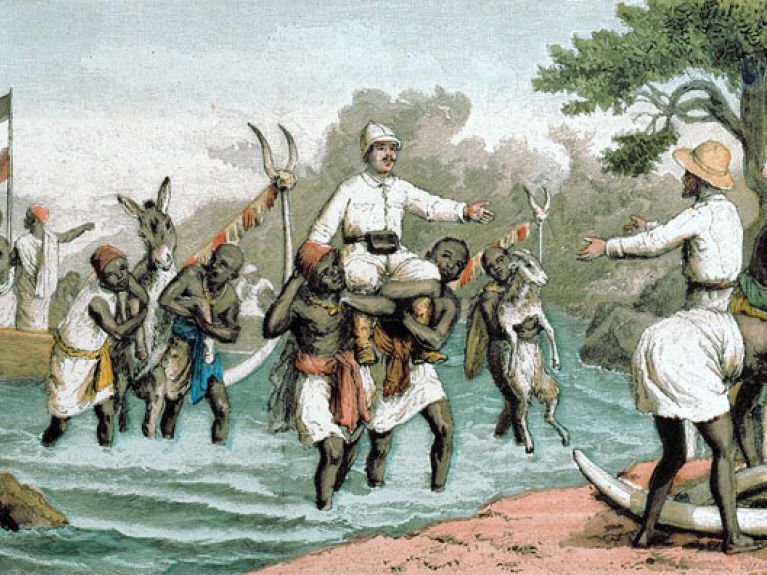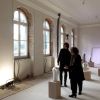German colonial history
An exhibition will open soon at the Deutsches Historisches Museum (DHM, German Historical Museum) in Berlin on the subject of German Colonialism. Fragments Past and Present. We put four questions to Arnulf Scriba, project manager of the exhibition.

Mr Scriba, on 14 October 2016 the Deutsches Historisches Museum in Berlin is opening an exhibition on German colonialism featuring about 500 exhibits. Could you describe two or three of the objects for us?
Each exhibit in the exhibition tells us something about a certain aspect of colonial history. For example, we discuss the Berlin Africa Conference of 1884/85, which took place without any African representatives. It is regarded as a prime example of imperial arrogance and a key event to remember in German and European colonial history. The conference marks the German Empire's entry into the active phase of colonialism, if you like. The original Final Act of the conference, dated 26 February 1885, is on show right at the beginning of the exhibition and places German colonialism into an overall European context.
One of the main aims of the exhibition is to provide an insight into the interests, course and dynamics of German colonial history by looking at various themes, and to reveal the underlying ideology of colonialism. Colonial domination was structurally violent and involved the demonstrations of power. So, among other things, we present a Maxim machine gun which, with over 500 shots per minute, was the most effective weapon of its time and a symbol of the colonial subjugation of Africa.
The exhibition does not end in 1919, when the German Empire was stripped of all its colonies in the Treaty of Versailles.
No, because we also look into the ways in which Germany has handled its colonial past. For a very long time, memories of the colonies in the Federal Republic of Germany were marked largely by nostalgia; public remembrance of German colonialism was given a positive spin. It was basically the students' movement in the 1960s that finally began to gradually revise German colonial history. One of the largest objects in the exhibition is the monument of Hermann von Wissmann, former governor of German East Africa – which was toppled in 1967 in Hamburg. It is still in storage in the Hamburg University observatory today.
There has been a lot of criticism in the last few years that the DHM was not paying enough attention to Germany's colonial history. Is this exhibition is a reaction to this?
The special exhibition is not a direct reaction, but the criticism has certainly encouraged us to go through with it. This project first recognizes the fact that colonialism has hardly been addressed in German historical museums up to now. After the Deutsches Historisches Museum staged the exhibitions 'Tsingtao – a chapter of German colonial history in China, 1897-1914' (1998) and 'Namibia – Germany. A shared history' (2004/05), in cooperation with the Rautenstrauch-Joest Museum in Cologne, there had been discussions in our museum for some time to present an exhibition on German colonialism. Indeed, not least the current debates on the recognition of the Herero and Namaqua genocide show the importance that colonial history still has today.
The DHM attaches a lot of importance to inclusion. What have you done to make your new exhibition also accessible to the blind and deaf?
First, we also present all the room texts in simple language, Braille and in sign language on a screen. The 16 'inclusive stations' also offer this service, going into greater depth on several subjects. For example, a colon figure, which is otherwise presented in a glass case, can be touched and felt. A tactile globe shows blind visitors where the German colonies were actually located. Furthermore, there are many more tactile elements that can be felt, as well as audio descriptions of objects and film excerpts.
Exhibition: 'German Colonialism. Fragments Past and Present', 14 October 2016 to 14 May 2017 at the Deutsches Historisches Museum in Berlin

